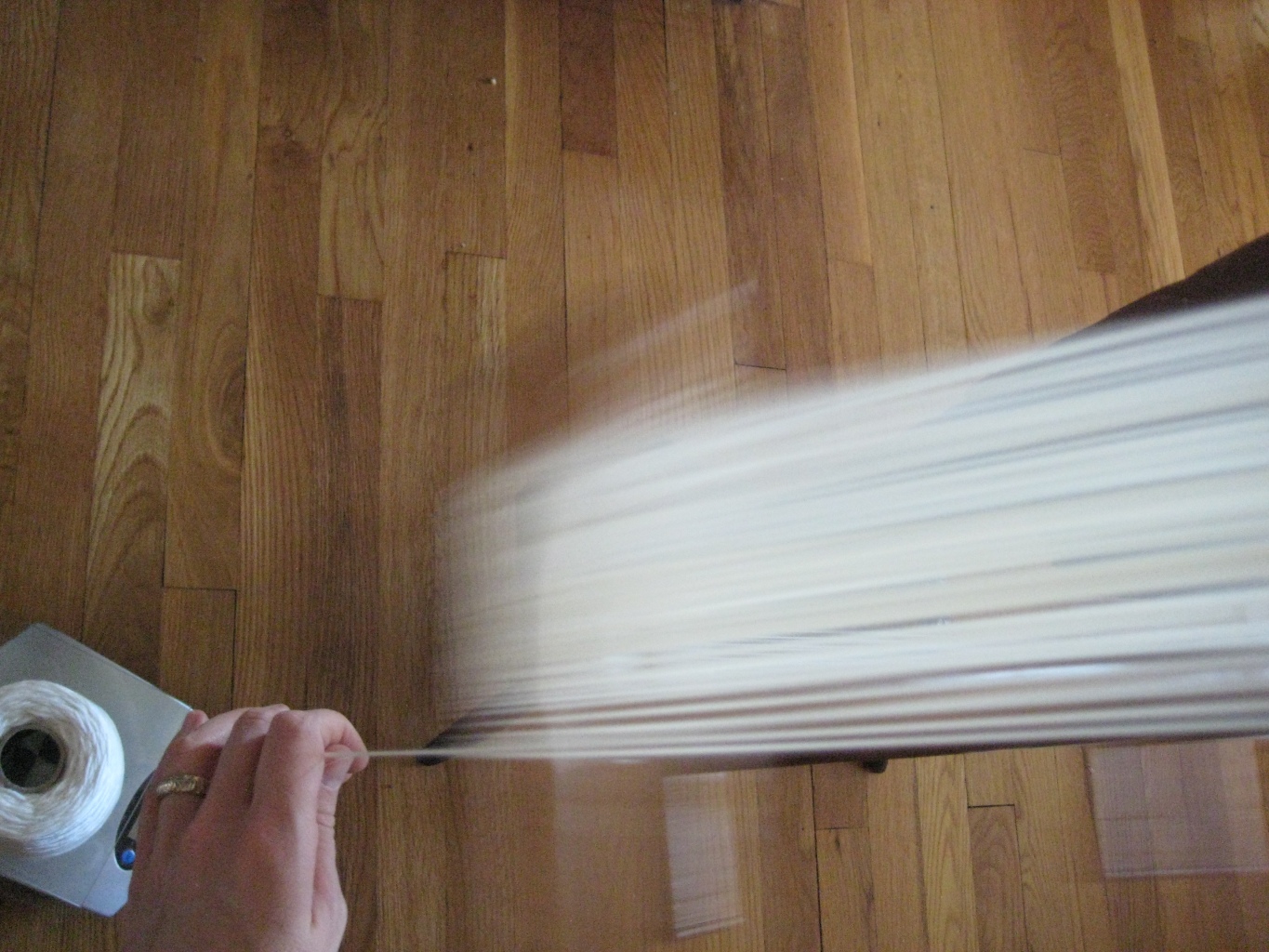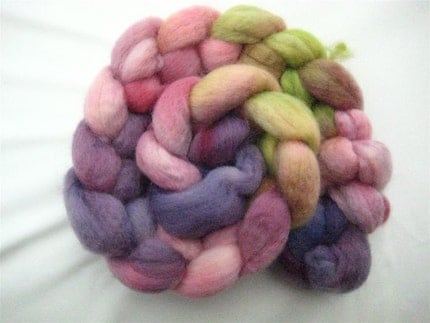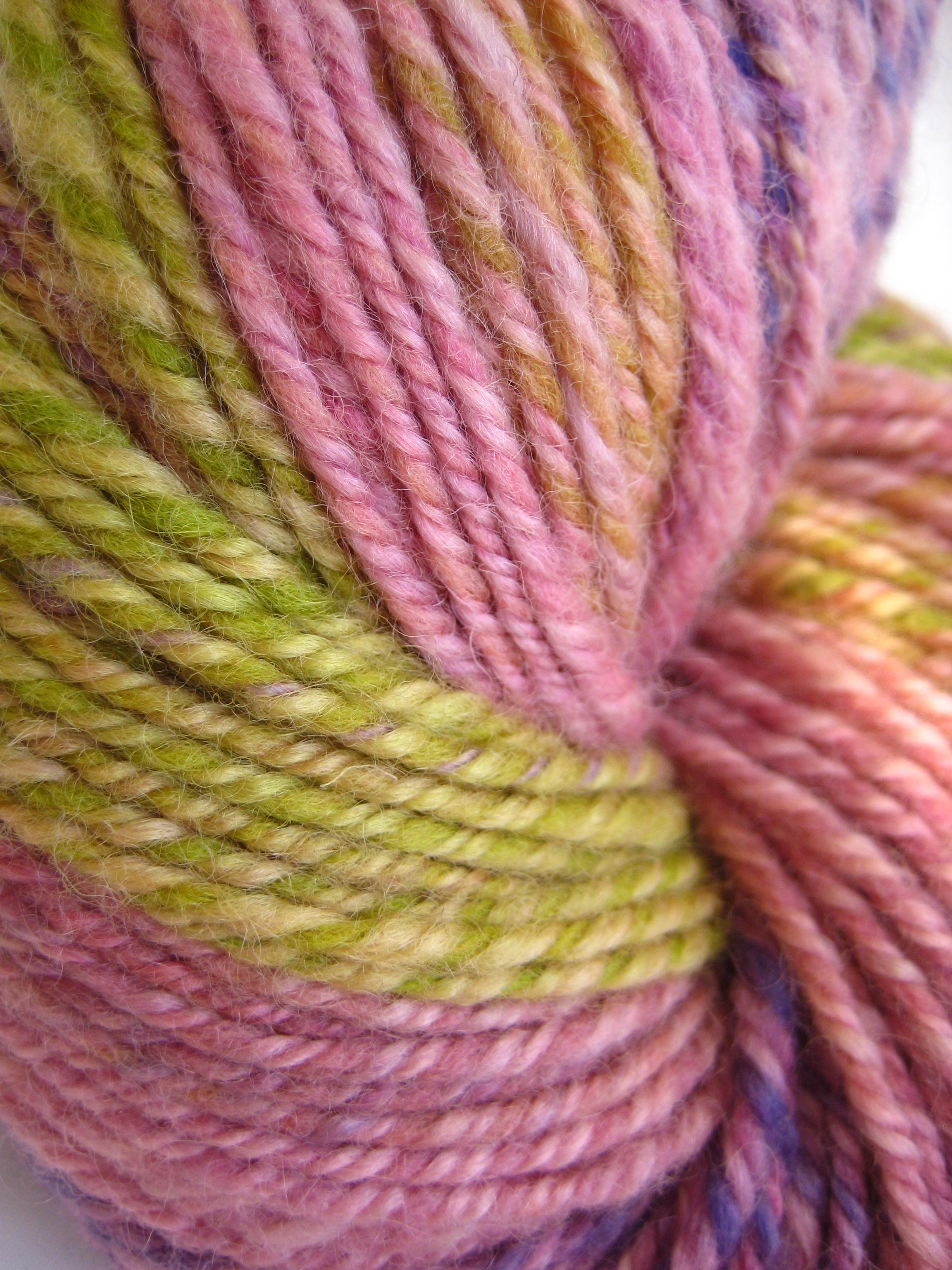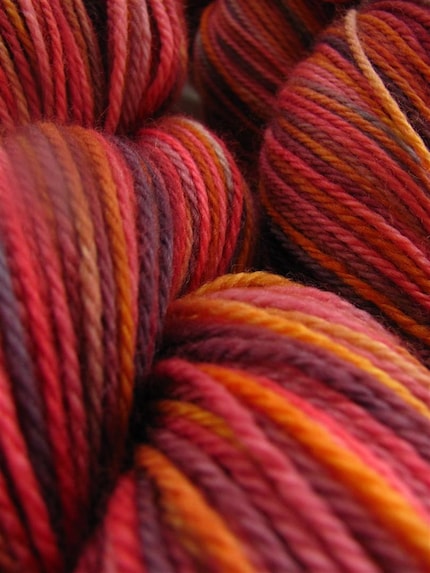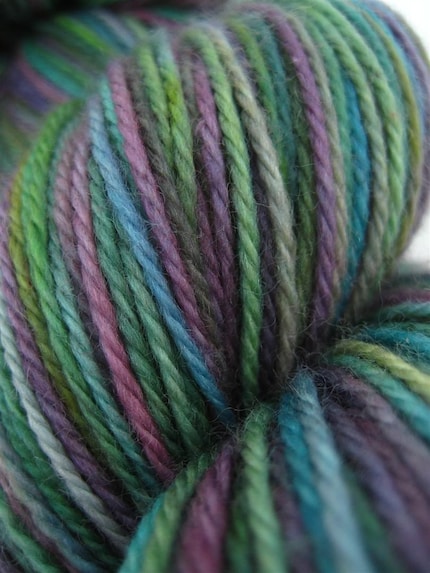Tucked away in the description of my yarns, right down there in the last paragraph, are these words: “Each item is individually hand-dyed by the SpaceCadet, using professional grade acid dyes which are mixed by hand from primaries”. That last bit is really important to me — mixed by hand from primaries. Every colour you see in my yarns and fiber has been created by hand, conjured up from only the primaries and black. It’s both the entire reason that making hand-dyed yarns excites me so much and the source of more than a little pride for me.
I see a colour in my mind (or, more usually, several colours together) that I know I want to dye and I start dissecting them. If it’s a purple, is it a red purple or a blue purple? If it’s a darker shade, I gauge how much black is needed to darken it. If it’s lighter, I work out the dye-to-water ratio it requires. And then I calculate in the personality of the fiber — every fiber takes dye in its own unique way, so the same colours can come out wildly different. And taking all that together, I mix up the dyes in the way that I think is going to create the colour I see in my mind, submerge the yarn, and… wait.
And the moment that I pull the yarn out again, and see whether my calculations — and my instinct — were correct, that is the most exciting moment in the whole dyeing process. When I get it right, I go a little wild, grabbing friends, family, any passers-by and saying, “Look! Look! this is the colour I was going for and this is what I got!”
Thinking abou this the other day, I wondered if all this excitement wasn’t really a bit ridiculous…? I mean, really, it’s just colour. Painters do it all the time, don’t they? And they not only mix their own colours but then go on to create something with them. They don’t just sit there crowing over all the little puddles of colours they’ve created on their palettes!
But then I realised that, unlike painters, when I mix my dyes, I’m doing it blind. The colours in the water are sometimes a good indication, but often not. And besides, the insides of the dyepots aren’t white so what I see in them is always distorted anyway. No, there’s no way to know if the colour is right until the yarn goes into the water. Dyeing is a one-shot deal.
So when I pull the yarn or fiber out of the dyepot and it’s exactly the colour I had envisioned, it’s pretty darned exciting. For this yarn, I imagined cornflowers, that lovely soft violet-blue that seems to be everywhere this time of year.

When I lifted the yarn out of the dyebath, I knew I’d nailed the colour. And, yeah, I am really proud to be able to say I mixed these colours by hand from primaries.




